Oct 25, 2016 | coins, fun, history, silver

The original bit coin.
In a comment about a technical issue, I was trying to explain that something would not work and exclaimed, “That isn’t worth two-bits.”
To the few people in the room within my age group, they understood what I said. Those younger than being eligible for AARP and those born outside of the United States did not understand. Since it is more blessed to give rather than receive, it gave me the opportunity to teach someone about the origin of money in the United States.
When the colonies were settled, George I was the King of England. Although the king ruled from an ocean away, the governors sent to manage the colonies on his behalf were under strict orders to not allow the colonists to coin money. An exception was made during a small period in the 17th century, colonists had to make due with the low-value copper coinage the king and his governors allowed.
Even with a standing army in the colonies, the governors could not control the commerce. Instead, they applied duties and fees for allowing the colonists to trade with the rest of the Western Hemisphere. Notice that there were no taxes because only the king could tax the royal subjects. Governors could levy duties to run the colonies. They also took kickbacks and bribes in order to get their way.
Although the Pound Sterling was the coin of the realm it was not available to the colonies. Instead, trading posts accepted the 8 reales coin, also known as the Thaler or Spanish Milled Dollar, as payment for goods and services. With the trade of high-cost goods like tobacco, cotton, and hides caught in the Appalachian Mountains the colonies relied more on the Spanish Milled Dollar than on the copper British coins.
Colonial governors ignored the growing economy, as they were able to satisfy the companies that sponsored the settlements and paid the taxes while lining their pockets. Colonists were able to make do with what was left.
A problem came about that everything could not be worth 8 reales and without subsidiary coinage, it was impossible to give change. Using the silver value of the coin, people would cut the coin into pieces in order to make subsidiary coinage. A milled dollar cut in half was a half-dollar. That half-dollar cut in half was a quarter-dollar and the quarter-dollar cut in half was called a bit.
The bit was the basic unit of commerce since prices were based on the bit. Of course, this was not a perfect solution. It was difficult to cut the quarter-dollars in half with great consistency which created problems when the bit was too small, called a short bit. Sometimes, goods or services would be adjusted to accommodate the short bit. Other times, short bits were supplemented with the English pennies that were allowed to circulate in the colonies.
Getting back to our adage, two bits were made from a quarter-dollar. Saying something was not worth two bits was either a negotiating tactic or someone wanted to use a short bit to pay for an item. Like many adages that have origins in the 17th and 18th centuries, the reason for their existence has been lost with time.
But arguing about its origin would be rocking the boat. We do know that some of our colonial ancestors should have measured twice and cut once to avoid the problem. But alas, there is no sense crying over spilled milk.
From my collection
-
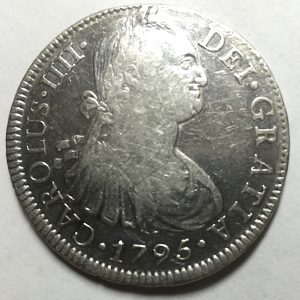
-
Obverse of a 1795 8 Reales silver Thaler
-
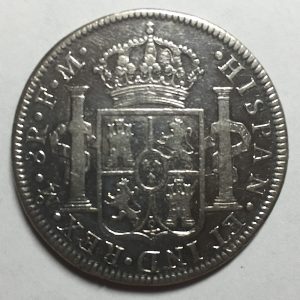
-
Reverse of a 1795 8 Reales Thaler; also know as the Pillar dollar or Spanish Milled dollar
Oct 22, 2016 | advice, ANA, commentary, education, errors, exonumia
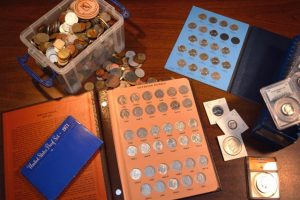 Although I owe you my impressions of the U.S. Mint’s Numismatic Forum, giving it the proper treatment I think it deserves has taken longer than expected. Rather, let me jump ahead to a recurring theme that takes over the conversation on the state of the hobby: Numismatics is a dying hobby of the old.
Although I owe you my impressions of the U.S. Mint’s Numismatic Forum, giving it the proper treatment I think it deserves has taken longer than expected. Rather, let me jump ahead to a recurring theme that takes over the conversation on the state of the hobby: Numismatics is a dying hobby of the old.
MYTH: Electronic transactions have taken over and hard currency is being used less.
FACT: Electronic transactions make up only 13-percent of retail purchases in the United States and 7.1-percent worldwide. Although the pundits like to point out that trillions of dollars change hands electronically, this includes non-consumer-related transactions such as bank transfers from one account to the other using the Automated Clearing House (ACH). If your paycheck is deposited directly into your account, it is transferred using the ACH system.
In real money, the International Monetary Fund estimates that the U.S. Gross Domestic Product (GDP), the total costs for all goods and services, to be $18,561,934,000,000 ($18.561 trillion). If 13-percent of that is electronic retail purchases, that means that $2,413,051,420,000 ($2.413 trillion) is made not using cash. What about the other $16.1 trillion dollars?
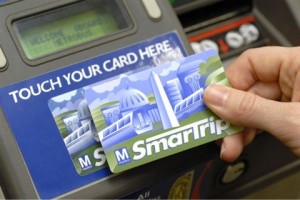 Depending on which report you read, electronic transactions should grow at a rate of 8-10 percent annually. Even if the U.S. GDP is on a pace to grow by only 1.4-percent, adding about $250 billion in electronic transactions will not make a significant dent in the rate of electronic transactions.
Depending on which report you read, electronic transactions should grow at a rate of 8-10 percent annually. Even if the U.S. GDP is on a pace to grow by only 1.4-percent, adding about $250 billion in electronic transactions will not make a significant dent in the rate of electronic transactions.
Of course, the U.S. are not spending $16 trillion in cash transactions, but both the U.S. Mint and the Bureau of Engraving and Printing are on course for record production years. Year-to-date, the U.S. Mint has produced $870,133,500 in circulating coins (not including half-dollar, dollar, and commemorative coins). For Fiscal Year 2015 (October 2014-September 2015) the BEP produced $166,302,000,000 ($166.302 trillion) in currency (not including $2 notes). Although some of the currency does replace worn notes (the BEP reports that 90-percent of $1 notes replace damaged notes) and a significant portion of the $100 notes are shipped to banks overseas, which represents quite a number of transactions.
Although electronic payment options make up 13-percent of all cashless transactions you have to remember that this market barely existed a few years ago. Even as banks and large retailers push to increase the number cashless transaction, there are problems that society faces when moving to a cashless retail system. The biggest problem is one of scale. The United States makes more money, spends more money, trades more money, and has more economic impact than any other country in the world. It is the world’s single largest economy with a strong capitalistic culture where most of the commerce is done with small businesses. Amongst all business, 55-percent of retail merchants are cash-only enterprises. They are too small to consider paying the 3-to-5 percent fees for using a credit card, known as the “swipe fee.” Of those that do take credit cards, at least 36-percent require a minimum purchase.
MYTH: The sharing economy is turning the economic world upside down changing the way we will pay for goods and services.
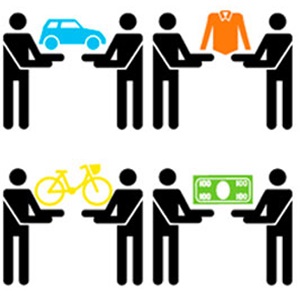 FACT: Human beings have been sharing and trading goods and services from the dawn of time. You killed an ox and have the hide left over. I have a lot of fruit I picked that I cannot eat. I will give you an amount of fruit and you give me the hide. Money was created as a medium of exchange when I did not want your fruit but wanted some of the goods someone else had. It was the pre-historic version of the three-way trade.
FACT: Human beings have been sharing and trading goods and services from the dawn of time. You killed an ox and have the hide left over. I have a lot of fruit I picked that I cannot eat. I will give you an amount of fruit and you give me the hide. Money was created as a medium of exchange when I did not want your fruit but wanted some of the goods someone else had. It was the pre-historic version of the three-way trade.
Some of us grew up trading. I remember trading a Mickey Mantle baseball card for a Jerry Koosman and two Donn Clendenon cards —one from Houston and the other from Montreal, just after the Mets traded for Clendenon. I thought I gave the kid a deal because 1969 turned out to be Mantle ’s last year.
What has changed since I made the trade? There has been a tremendous change in technology. While we set the price for the baseball cards we traded, now there are price guides, electronic markets, auctions, and online trading sites. Even in other categories, you might place a classified ad in a newspaper or an advertising rag like PennySaver or something like Uncle Henry’s in Maine. Now there are sites like Craigslist, AirBnB, Uber and Lyft that expands the market.
Pundits like to point to the sharing economy’s growth. The problem with the reports is that this version of the sharing economy has gone from nothing to something with a lot of press coverage. Anytime there is something shiny and new it grabs the attention of the public before they move on to the next distraction.
We share numismatics all of the time. We go to shows and display our collections for competitions. We enter registry sets to try to create a nice collection or even worst collection with the advent of “low ball” sets of coins of very low grades. We blog and read about other’s collections. We post finds to public forums and sometimes bring our collections to show off at club meetings.
Sometimes we even trade. Have you traded a few Barber dimes for a Barber half because you needed the half for your collection? How about three Morgan dollars for an elusive 1921-S Walking Liberty half-dollar?
The only difference between this and the new sharing economy is the lack of computer interface. Sometimes that human interaction is more fun than hiding behind a screen.
MYTH: People, especially millennials are not interested in collecting anything.
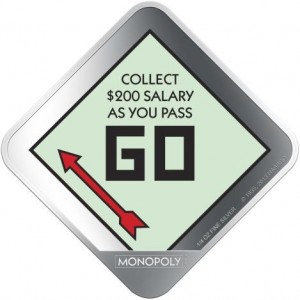
New Zealand Mint produces Monopoly coins for the Island nation of Niue. Did you pass Go?
One of the fastest growing sectors of this market is board games. While some games do incorporate electronics into their play, this new generation of gamers is finding that social gaming can be as much fun as their online endeavors.
Numismatics has never been a welcoming hobby for the mid-to-lower level collector. Dealers who are older may have a difficult time relating to younger and, frankly, a non-white demographic (see my post about one such incident here). It has created a culture of cranky older Caucasian collectors who think that their way is the only way to collect.
It is not just the dealers. Mainstream publishers put a lot of effort into creating references and collecting supplies that satisfy the market as being pushed by the dealers. Even worse, while the American Numismatic Association does recognize other aspects of numismatics, the fact that most of the Board of Governors are in the coin business with years of experiences in the coin business, that becomes the focus of the ANA.
It is time for the industry and its representative organization, the ANA, to remember that numismatics is more than coins. Currency, exonumia, scripophily, and even military medals are all part of numismatics. Concentrating on coins, especially coverage of high-value sales scares off many novices who may be willing to look at coins as a hobby. When I go out to schools in the Washington, D.C. metro area, I will bring enough Metro (the local transit system) tokens for everyone in the class. After buying a bulk bag of tokens, I have plenty to give away along with the story of how they were once used. But it allows me to show the students that numismatics is more than coins. I explain how I sit at junk boxes and at the tables of token dealers to find items from my hometown of New York. When I show them four pages of 2x2s with tokens and medals from New York and say that in three years I may have spent as much as $200, they seem to understand that you can have fun without spending a lot of money.
MYTH: We lost those who collected the state quarters forever.
 FACT: We also retained a lot of those collectors. Unfortunately, we damaged many others.
FACT: We also retained a lot of those collectors. Unfortunately, we damaged many others.
What made the state quarter program popular was that the way it was administered made everyone a stakeholder. Rather than dictating the design, states were encouraged to allow public participation to help decide on their quarter’s design. Contests and state pride went into the quarters that allowed each state to celebrate their home state. Ordinary people were brought into the process and ceremonies held in each state announcing the designs and on the release of the quarters.
Of course, the state quarters were also the hobby’s demise as television hucksters sold overpriced junk surrounding the sets. Colored coins and “special” sets were sold at high prices with the hint that they would only increase in value. When these people tried to cash in on their “investment” they found they overpaid, became angry, and may not come back. During this time, the ANA was nearly non-existent in the education process as it was undergoing its own internal political battles. Without someone to help stand up for the hobby to help educate the public, the industry suffered.
Although the ANA has improved in many areas, it continues to be about coins with a slant toward classic (pre-1965) and rare coins. The only modern coins that seem to get any amount of respect from the community are commemoratives, bullion, and errors. With the so-called modern era being 52 years old, it is time for the old and crusty of the numismatics industry to either get on board with that it is new to the new collectors or maybe it is time to consider retirement.
The lesson I have learned in numismatics as well in my business of buying and selling collectibles is that in order to expand any hobby it has to be made into something personal. Sports collectibles sell memories of your heroes. Space collectibles sell the mystique of outer space. Automobilia seems to have a fascination for a lot of people even as what was considered modern nameplates like Plymouth and Pontiac have gone the way of DeSoto and American Motors.
Hobbies have to also be interesting. Is it really interesting to collect a series of all of the same coins where the only difference is the date or mintmark? Again, why does a collection have to be biased for coins? Can someone have fun collecting So-called dollars, transportation tokens, or even unusual coins? I think about how much fun Charmy Harker might have had to put together her award-winning exhibit Penny Potpourri with things made out of pennies. If you have not seen her exhibit, you can find images here. It has to be one of the best exhibits I have ever seen because it is unusual. I like things that are different.
In order to get people interested in the hobby, you cannot introduce it to them by showing a 1909-S VDB Lincoln cent or a 1937-D 3-Legged Buffalo nickel as an example. Not only are these coins difficult to find and less affordable, but not everyone may be interested. I like to use my two-pages of 2×2 holders with a set of transportation tokens with every letter of the alphabet cut out of the center, except “Q” and “Z,” along with some that have shapes. When I tell someone I paid around $50 for the initial investment and can buy most tokens for less than $5 each, they want to know how they could get started.
Here are some ideas to help you start a new collection. You can only use these if you do so by recruiting a friend or relative who is not currently part of the hobby:
- If you want to start with coins, go find a folder of currently circulating coins and see who can fill their folder first only from pocket change. I recommend either Lincoln Memorial cents, which can be interesting finding S-mint circulating cents on the east coast, or Jefferson nickels (for fun, use Whitman Jefferson Nickel folder #2).
- Another idea for collecting coins is to make a collection based on a theme. Ideas for themes can be the year you were born, coins with an animal like buffalos, or create a type set that represents some of the subtle changes in a long series like Lincoln cents.
- There are more to exonumia than transportation tokens. If your state issued tax tokens in the early part of the 20th century then how about finding examples for a collection. Tokens are still being created for gaming, casino chips, parking tokens, or store tokens the pre-cursor to paper coupons. Advertising tokens can be a fun way to collect your hometown. Tokens with themes, shapes, and cutouts can be a lot of fun.
- Go beyond tokens to encased coins. Encased coins have been used as a private commemorative, advertising, and I even found one for an electric supply company that promised money off if you returned it to their store.
- You can collect elongated cents, also called squished pennies, from almost anywhere. Recently, I found a machine in the Philadelphia Mint’s gift shop. For 51-cents, each I was able to buy two souvenirs. Collecting elongateds also helps you keep the record of where you have been.
And I didn’t mention currency or scripophily. One cool idea would be to collect stock certificates representing what you might find on a Monopoly game board.
If you have other suggestions, send it as a comment!
Now go out and start a collection. Recruit a friend and do it together.
Selection of my New York collection
-
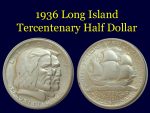
-
1936 Long Island Tercentenary Half-Dollar
-

-
1983 Brooklyn Bridge Centennial Medal issued by Brooklyn Union Gas
-

-
Medal from the opening of the Brooklyn Bridge in 1883
-

-
1956-D Encased Cent from the Chase Money Museum
-

-
A check from the First National Bank of Inwood (NY)
-
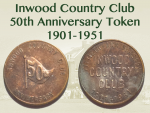
-
50th Anniversary medal from the Inwood Country Club.
-
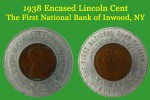
-
1938 Encased Cent from the First National Bank of Inwood (NY)
-

-
1984 LIRR Sesquicentennial Bronze Medal
-

-
TBTA Toll Token
-

-
Reverse of the Triborough Bridge and Tunnel Authority Rockaways resident token.
-
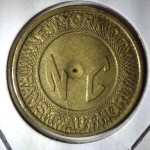
-
New York City Type 2 Subway Token error. It’s missing the punched out “Y”
-

-
2000-P New York quarter with Daniel Carr’s autograph on ICG label
-
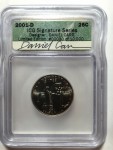
-
2000-D New York quarter with Daniel Carr’s autograph on ICG label
-
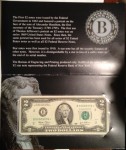
-
Series 2003 $2 Star Note from the Federal Reserve Bank of New York. Rosario Marin/John Snow signatures.
-

-
Series 2013 Uncirculated $1 Federal Reserve Note from the Federal Reserve Bank of New York
-

-
A&S Charge Token with account number
Oct 16, 2016 | administrative, news, poll
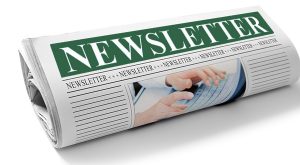 Those who follow me on Twitter or watch the widget in the sidebar on these pages can watch the coin, currency, and bullion-related stories I find on the Internet. Rather than find the stories from the regular numismatic sources, I try to find things reported in the non-numismatic media.
Those who follow me on Twitter or watch the widget in the sidebar on these pages can watch the coin, currency, and bullion-related stories I find on the Internet. Rather than find the stories from the regular numismatic sources, I try to find things reported in the non-numismatic media.
Some of you may not use Twitter, find it difficult to watch the timeline, and do not see some of the stories I find even if you are peering into my timeline using the widget. You might think that you are missing something interesting that you would not think about otherwise. Some of the recent stories I found include:
If there is an interest, I will create a weekly newsletter with a short introduction to the stories and links to where to find more information. For example, I would write a blurb about the Battle of Hastings 50p coins, maybe add a picture, and send links to the 2-to-3 sites I found stories about the coin.
Most of these stories will be new content probably not appearing on the blog or in the numismatic press—with the exception of the coin recyclers’ issues since I have more information than what is published. It also provides insights into what the press says about coins and currency.

Loading ...
NOTE: If the poll does not appear please click here.
Oct 13, 2016 | coins, news, US Mint
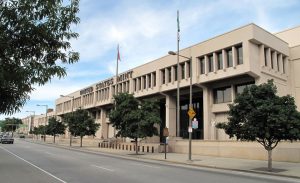 Hello from Philadelphia!
Hello from Philadelphia!
I am in Philadelphia to attend the U.S. Mint’s Numismatic Forum. According to the U.S. Mint, “The purpose of the event is to gather leaders and stakeholders of the numismatic community to explore ways to stimulate and revitalize the hobby. As we approach the U.S. Mint’s 225th anniversary next year, we hope this unique opportunity to examine and discuss the Mint’s past, present and future will help move all the elements of the numismatic industry forward.”
I do not know who will be there but I am sure that I will see many of the regulars of the numismatic community. From the U.S. Mint, we will probably hear from the current Principal Deputy Director Rhett Jeppson and others from the Mint’s staff. Here is an overview of the schedule:
- Arrival and welcome from the U.S. Mint along with introductions.
- Recognizing the past:
- U.S. Mint Heritage Assets overview
- Smithsonian Numismatic Collection overview
- The Present:
- Mint product update and marketing initiatives update
- “Invigorating the Coin Collecting Hobby” panel discussion
- The Future: Workgroup discussions with reports from the workgroups
- Visit to the Philadelphia Mint
For those of you who will not be there and would like to follow along, you can follow @coinsblog on Twitter as I send out periodic updates. The widget on the upper-right side of the page can also be used to follow the progress. Also, when I can post pictures, they will be copied to the Pinterest on the board “Numismatic Forum” or watch the widget below.
Of course, there will be a report posted over the weekend!
Oct 11, 2016 | cash, coins, commentary, currency, markets
Cash seems to be the new 4-lettered word.
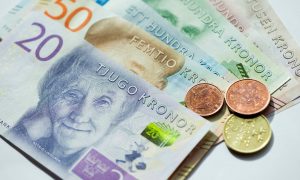 In February, former Treasury Secretary Lawrence Summers authored an opinion article that appeared in The Washington Post calling for the end of high-denomination banknotes. Summers cites a paper that claims to make a compelling case to stop issuing high denomination notes and possibly withdraw them from circulation because of its use in crime and corruption because large denominations are easier to carry. The paper claims that criminals have nicknamed the €500 note the “Bin Laden.”
In February, former Treasury Secretary Lawrence Summers authored an opinion article that appeared in The Washington Post calling for the end of high-denomination banknotes. Summers cites a paper that claims to make a compelling case to stop issuing high denomination notes and possibly withdraw them from circulation because of its use in crime and corruption because large denominations are easier to carry. The paper claims that criminals have nicknamed the €500 note the “Bin Laden.”
Last May, the European Central Bank announced will stop printing the €500 banknote by the end of 2018 when the €100 and €200 banknotes of the Europa series are planned to be introduced. Although the announcement did not quote the Summers article, the announcement had addressed some of the issues he addressed.
In June, Sweden became the first nation to announce a formal policy to become a cashless society within five years. According to reports, Riksbank, the Swedish central bank, claims that just under 2-percent of all transactions are made by cash. They expect that number to drop to one-half of one-percent by 2020. Most shops report that 20-percent of sales are made using cash.
Sweden may be an outlier. Globally about 75-percent of all sales are made using cash.
In the United States, it is being reported that some higher-end retailers have stopped taking cash.
Retailers have been looking to the convenience industries as an example of the future. There are parking lots that no longer take coins in their parking meters. Pay stations now only accept credit cards. Some toll roads now require a special transponder to be mounted in your car because there are no booths to collect tolls. Those transponders must be linked to a credit card. Airlines no longer take cash when you buy beverages or snacks on the plane because handling the change is too difficult.
New payment options have entered the market. Smartphone-based Apple Pay, Samsung Pay, and MasterCard Master Pass have worked to make it easier to separate you from your money by allowing you to wave your phone at the reader and pay. For most retailers, there is little they have to do in order to accept these payment methods as long as they are accepting chip-based transactions. Since the transaction cost to the retailer does not change, it is an incentive for them to accept these types of electronic payments.
Although electronic payment options make up 13-percent of all cashless transactions you have to remember that this market barely existed a few years ago.
Even as banks and large retailers push to increase the number cashless transaction, there are problems that society faces when moving to a cashless retail system.
The biggest problem is one of scale. The United States makes more money, spends more money, trades more money, and has more economic impact than any other country in the world. It is the world’s single largest economy with a strong capitalistic culture where most of the commerce is done with small businesses. Amongst all business, 55-percent of retail merchants are cash-only enterprises. They are too small to consider paying the 3-to-5 percent fees for using a credit card, known as the “swipe fee.” Of those that do take credit cards, at least 36-percent require a minimum purchase.
Once you get past the problem of scale, then there are the issues of the poor who do not have bank accounts. Aside from not having the economic power to work with the banks, there are some communities that are culturally opposed to the banking system. Even if they can afford to have a bank account, many choose not to open one. The near failure of large financial institutions in 2008 did not help in the trust factor.
Of course, the one cultural issue that cannot be ignored is privacy. Cash transactions are private. Only the buyer and seller knows the details of the transaction (unless the buyer volunteers their loyalty or rewards account information). With the problems of hacking around the world, how do you know that your credit card transaction are safe? Should we ask the victims of the computer hacks on Target and Home Depot?
Aside from privacy, credit cards can be costly to the customer. High-interest rates, debilitating debt, and collection issues see the use of consumer credit dropping when there is an economic downturn. During the Great Recession that began in 2008, spending went down and, when the economy began to improve, savings went up. When wages began to rise in 2010, more money was being spent paying down debt than adding to the economy. Rather than stimulating the economy, this creates a stagnant effect since the economy thrives more on the selling of goods and not by the managing of cash.
It seems that every six months there is yet another “Chicken Little” story that either we are or should stop using cash. But when society seems to be set in using cash even when there is anecdotal evidence that makes it appear that we are on the brink of a cashless society, they become quiet as if they ended up in Foxey Loxey’s den!
Reports of cash’s eventual demise appear to be as amusing as it is greatly exaggerated. For numismatists, this means that our hobby will continue to grow with new, fresh material for years to come. Happy collecting!
Oct 9, 2016 | medals, silver, US Mint, values, video
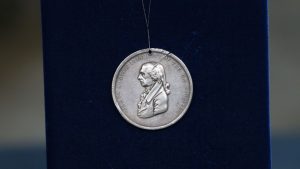 Finding coins in pocket change can be a lot of fun. Then there are those who find hoards of coins buried in the ground or just stored somewhere that people forgot. From shipwrecks to treasure hunts, we all dream of finding the next jackpot somewhere.
Finding coins in pocket change can be a lot of fun. Then there are those who find hoards of coins buried in the ground or just stored somewhere that people forgot. From shipwrecks to treasure hunts, we all dream of finding the next jackpot somewhere.
On your great grandfather’s farm, a worker was plowing the field and found a silver medal. It has the image of President James Madison on one side and what looks like a peace medal on the other. Rather than letting go, great grandpa traded three hogs for the medal.
The medal gets handed down from generation to generation until one of his ancestors takes the medal to Antiques Roadshow to find out what it is worth.
You are told that it is a silver James Madison Indian Peace Medal. The 1809 medal was designed by assistant engraver John Reich and struck at the U.S. Mint in Philadelphia. It is not the largest of the medals but at 2½-inches, it is a fairly significant medal.
What is it worth? See what Jason Preston of Jason Preston Art Advisory & Appraisals of Los Angeles said about the medal on Antiques Roadshow:
Did you guess right?
Image and video courtesy of
WGBH and the Antiques Roadshow
Oct 6, 2016 | charity, news, YN
 With many thanks to my readers and the numismatic community, the DonorsChoose.org campaign to fund the trip for Mrs. Janas of Juniata Park Academy class to visit the Philadelphia Mint and Federal Reserve has been funded!
With many thanks to my readers and the numismatic community, the DonorsChoose.org campaign to fund the trip for Mrs. Janas of Juniata Park Academy class to visit the Philadelphia Mint and Federal Reserve has been funded!
It will be a great experience for the class to be able to visit both the Mint and Fed.
I had previously contacted Mrs. Janas and offered to travel to Philadelphia to give her students a presentation about numismatics in daily life. Now that the project is funded, I will make the arrangement to visit her class to provide a more hands on the convergence between numismatics, math, and economics. I will bring some “gifts” for the class so that they can have in-hand examples.
There aren’t the words to express how thrilled I am that this project was funded.
Thank you!
Oct 5, 2016 | coins, commemorative, legislative, news
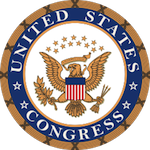 Congress returned to work right after Labor Day, not that you would have noticed. Aside from the legislation that renames most offices or other federal structures in honor of someone most of us have never hear about, congress was locked in a battle over the federal budget that was to expire on September 30. Of course, the fights were based on partisan politics. Rather than doing what is right for the nation, these hacks broke down into partisan bickering. A continuing resolution, not a real budget, was passed on September 29. They have until December 9 to fix their problems.
Congress returned to work right after Labor Day, not that you would have noticed. Aside from the legislation that renames most offices or other federal structures in honor of someone most of us have never hear about, congress was locked in a battle over the federal budget that was to expire on September 30. Of course, the fights were based on partisan politics. Rather than doing what is right for the nation, these hacks broke down into partisan bickering. A continuing resolution, not a real budget, was passed on September 29. They have until December 9 to fix their problems.
In another part of my life, I write a monthly newsletter for the Gold & Silver Political Action Committee. The PAC was started by former American Numismatic Association President Barry Stuppler to help be a voice for issues facing the numismatic and bullion industry. As part of my research into issues, I speak with staffers and other contacts on Capitol Hill to provide background information on the PAC’s issues.
This past month I used an opportunity to have a discussion about the state of congress with two lobbyists. Both are former staffers working with members on opposite sides of the aisle and have been working in the halls of congress since early in the Clinton administration. Neither were optimistic that congress would accomplish anything, even during the lame duck session after the election. With the budget battle looming and the unsettle Supreme Court nomination, neither of these professionals were optimistic.
For some of us, watching congress is a sport. While it might be as painful as watching the 1962 New York Mets or the 2003 Detroit Tigers or waiting for the Cubs to win the World Series, I will continue to report potential legislation that may affect modern collecting.
Only one bill was introduced in September:
H.R. 6025 American Innovation $1 Coin Act
Sponsor: Rep. James Himes (D-CT)
• Summary: Redesign and issuance of $1 coins honoring innovation, innovators, and pioneers from each State, the District of Columbia, and each territory.
• Introduced: September 14, 2016
• Referred to the House Financial Services Committee
This bill can be tracked at https://www.govtrack.us/congress/bills/114/hr6025.




 Depending on which report you read,
Depending on which report you read, 


















 Those who follow me on Twitter or watch the widget in the sidebar on these pages can watch the coin, currency, and bullion-related stories I find on the Internet. Rather than find the stories from the regular numismatic sources, I try to find things reported in the non-numismatic media.
Those who follow me on Twitter or watch the widget in the sidebar on these pages can watch the coin, currency, and bullion-related stories I find on the Internet. Rather than find the stories from the regular numismatic sources, I try to find things reported in the non-numismatic media. Hello from Philadelphia!
Hello from Philadelphia!


 Congress returned to work right after Labor Day, not that you would have noticed. Aside from the legislation that renames most offices or other federal structures in honor of someone most of us have never hear about, congress was locked in a battle over the federal budget that was to expire on September 30. Of course, the fights were based on partisan politics. Rather than doing what is right for the nation, these hacks broke down into partisan bickering. A continuing resolution, not a real budget, was passed on September 29. They have until December 9 to fix their problems.
Congress returned to work right after Labor Day, not that you would have noticed. Aside from the legislation that renames most offices or other federal structures in honor of someone most of us have never hear about, congress was locked in a battle over the federal budget that was to expire on September 30. Of course, the fights were based on partisan politics. Rather than doing what is right for the nation, these hacks broke down into partisan bickering. A continuing resolution, not a real budget, was passed on September 29. They have until December 9 to fix their problems.